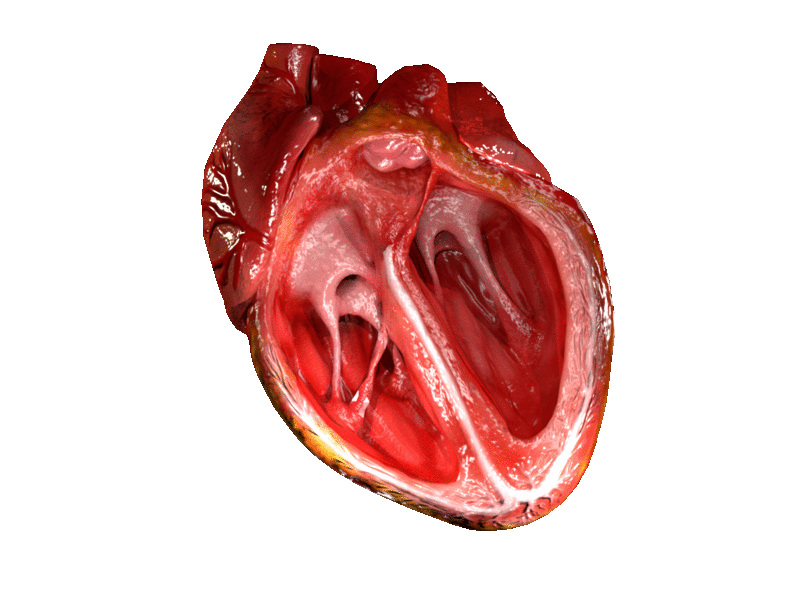|
Cloforex
Cloforex (Oberex) is an anorectic of the amphetamine class. It is a prodrug to chlorphentermine. It never became a mass produced drug in part due to the side effects found in mice. Mice who consumed 75 mg of cloforex a day experienced weight loss along with pulmonary hypertension and hair loss Hair loss, also known as alopecia or baldness, refers to a loss of hair from part of the head or body. Typically at least the head is involved. The severity of hair loss can vary from a small area to the entire body. Inflammation or scarring .... See also * Alaproclate References Anorectics Carbamates 4-Chlorophenyl compounds Phentermines Prodrugs Serotonin receptor agonists Serotonin releasing agents {{nervous-system-drug-stub ... [...More Info...] [...Related Items...] OR: [Wikipedia] [Google] [Baidu] |
Anorectic
An anorectic is a drug that reduces appetite, resulting in lower food consumption, leading to weight loss. These substances work by affecting the central nervous system or certain neurotransmitters to create a feeling of fullness or reduce the desire to eat. The understanding of anorexiant effects is crucial in the development of interventions for weight management, eating disorders, and related health concerns. The anorexiant effect can be induced through diverse mechanisms, ranging from hormonal regulation to neural signaling. Ghrelin, leptin, and peptide YY are among the hormones involved in appetite control. Additionally, neurotransmitters such as serotonin and dopamine in the central nervous system contribute significantly to the regulation of food intake. By contrast, an appetite stimulant is referred to as orexigenic. The term is (from the Greek and ), and such drugs are also known as anorexigenic, anorexiant, or appetite suppressant. History Used on a short-term ... [...More Info...] [...Related Items...] OR: [Wikipedia] [Google] [Baidu] |
Substituted Amphetamine
Substituted amphetamines, or simply amphetamines, are a chemical class, class of compounds based upon the amphetamine structure; it includes all derivative (chemistry), derivative compounds which are formed by replacing, or substitution reaction, substituting, one or more hydrogen atoms in the amphetamine core structure with substituents. The compounds in this class span a variety of pharmacological subclasses, including stimulants, Empathogen-entactogen, empathogens, and hallucinogens, among others. Examples of substituted amphetamines are amphetamine (itself), methamphetamine, ephedrine, cathinone, phentermine, mephentermine, tranylcypromine, bupropion, methoxyphenamine, selegiline, amfepramone, amfepramone (diethylpropion), pyrovalerone, MDMA (ecstasy), and 2,5-dimethoxy-4-methylamphetamine, DOM (STP). Some of amphetamine's substituted Derivative (chemistry), derivatives occur in nature, for example in the leaves of ''Ephedra (genus), Ephedra'' and khat plants. Amphetamine w ... [...More Info...] [...Related Items...] OR: [Wikipedia] [Google] [Baidu] |
Prodrug
A prodrug is a pharmacologically inactive medication or compound that, after intake, is metabolized (i.e., converted within the body) into a pharmacologically active drug. Instead of administering a drug directly, a corresponding prodrug can be used to improve how the drug is absorbed, distributed, metabolized, and excreted (ADME). Prodrugs are often designed to improve bioavailability when a drug itself is poorly absorbed from the gastrointestinal tract. A prodrug may be used to improve how selectively the drug interacts with cells or processes that are not its intended target. This reduces adverse or unintended effects of a drug, especially important in treatments like chemotherapy, which can have severe unintended and undesirable side effects. History Many herbal extracts historically used in medicine contain glycosides (sugar derivatives) of the active agent, which are hydrolyzed in the intestines to release the active and more bioavailable aglycone. For example, sal ... [...More Info...] [...Related Items...] OR: [Wikipedia] [Google] [Baidu] |
Chlorphentermine
Chlorphentermine, sold under the brand names Apsedon, Desopimon, and Lucofen, is a serotonergic appetite suppressant of the amphetamine family. Developed in 1962, it is the ''para''- chloro derivative of the better-known appetite suppressant phentermine, which is still in current use. The drug acts as a highly selective serotonin releasing agent (SRA). It is not a psychostimulant and has little or no misuse potential, but is classed as a Schedule III drug in the United States due mainly to its similarity to other appetite suppressants such as diethylpropion which have been more widely misused. It is no longer used due mainly to safety concerns, as it has a serotonergic effects profile similar to other withdrawn appetite suppressants such as fenfluramine and aminorex which were found to cause pulmonary hypertension and cardiac fibrosis following prolonged use. Chlorphentermine was first synthesized by 1954 and was subsequently developed in the early 1960s. It remained on ... [...More Info...] [...Related Items...] OR: [Wikipedia] [Google] [Baidu] |
Pulmonary Hypertension
Pulmonary hypertension (PH or PHTN) is a condition of increased blood pressure in the pulmonary artery, arteries of the lungs. Symptoms include dypsnea, shortness of breath, Syncope (medicine), fainting, tiredness, chest pain, pedal edema, swelling of the legs, and a fast heartbeat. The condition may make it difficult to exercise. Onset is typically gradual. According to the definition at the 6th World Symposium of Pulmonary Hypertension in 2018, a patient is deemed to have pulmonary hypertension if the pulmonary mean arterial pressure is greater than 20mmHg at rest, revised down from a purely arbitrary 25mmHg, and pulmonary vascular resistance (PVR) greater than 3 Wood units. The cause is often unknown. Risk factors include a family history, prior pulmonary embolism (blood clots in the lungs), HIV/AIDS, sickle cell disease, cocaine use, chronic obstructive pulmonary disease, sleep apnea, living at high altitudes, and problems with the mitral valve. The underlying mechanism typ ... [...More Info...] [...Related Items...] OR: [Wikipedia] [Google] [Baidu] |
Hair Loss
Hair loss, also known as alopecia or baldness, refers to a loss of hair from part of the head or body. Typically at least the head is involved. The severity of hair loss can vary from a small area to the entire body. Inflammation or scarring is not usually present. Hair loss in some people causes psychological distress. Common types include male- or female-pattern hair loss, alopecia areata, and a thinning of hair known as telogen effluvium. The cause of male-pattern hair loss is a combination of genetics and male hormones; the cause of female pattern hair loss is unclear; the cause of alopecia areata is autoimmune; and the cause of telogen effluvium is typically a physically or psychologically stressful event. Telogen effluvium is very common following pregnancy. Less common causes of hair loss without inflammation or scarring include the pulling out of hair, certain medications including chemotherapy, HIV/AIDS, hypothyroidism, and malnutrition including iron def ... [...More Info...] [...Related Items...] OR: [Wikipedia] [Google] [Baidu] |
Alaproclate
Alaproclate (developmental code name GEA-654) is a drug that was being developed as an antidepressant by the Swedish pharmaceutical company Astra AB (now AstraZeneca) in the 1970s. It acts as a selective serotonin reuptake inhibitor (SSRI), and along with zimelidine and indalpine, was one of the first of its kind. Development was discontinued due to the observation of liver complications in rodent studies. In addition to its SSRI properties, alaproclate has been found to act as a non-competitive NMDA receptor antagonist, but does not have discriminative stimulus properties similar to phencyclidine (PCP). The drug is similar in chemical structure to chlorphentermine, cloforex, and cericlamine, but is not itself a phenethylamine or amphetamine as it has an oxygen atom in place of the amine nitrogen. Alaproclate was first described in the scientific literature by 1978. Synthesis : The Grignard reagent, methylmagnesium iodide, reacts with methyl 4-chlorophenylacetate (1) ... [...More Info...] [...Related Items...] OR: [Wikipedia] [Google] [Baidu] |
Anorectics
An anorectic is a drug that reduces appetite, resulting in lower food consumption, leading to weight loss. These substances work by affecting the central nervous system or certain neurotransmitters to create a feeling of fullness or reduce the desire to eat. The understanding of anorexiant effects is crucial in the development of interventions for weight management, eating disorders, and related health concerns. The anorexiant effect can be induced through diverse mechanisms, ranging from hormonal regulation to neural signaling. Ghrelin, leptin, and peptide YY are among the hormones involved in appetite control. Additionally, neurotransmitters such as serotonin and dopamine in the central nervous system contribute significantly to the regulation of food intake. By contrast, an appetite stimulant is referred to as orexigenic. The term is (from the Greek and ), and such drugs are also known as anorexigenic, anorexiant, or appetite suppressant. History Used on a short-term ... [...More Info...] [...Related Items...] OR: [Wikipedia] [Google] [Baidu] |
Carbamates
In organic chemistry, a carbamate is a category of organic compounds with the general formula and structure , which are formally derived from carbamic acid (). The term includes organic compounds (e.g., the ester ethyl carbamate), formally obtained by replacing one or more of the hydrogen atoms by other organic functional groups; as well as salts with the carbamate anion (e.g. ammonium carbamate). Polymers whose repeat units are joined by carbamate like groups are an important family of plastics, the polyurethanes. See for clarification. Properties While carbamic acids are unstable, many carbamate esters and salts are stable and well known. Equilibrium with carbonate and bicarbonate In water solutions, the carbamate anion slowly equilibrates with the ammonium cation and the carbonate or bicarbonate anions: : : Calcium carbamate is soluble in water, whereas calcium carbonate is not. Adding a calcium salt to an ammonium carbamate/carbonate solution will precipitate ... [...More Info...] [...Related Items...] OR: [Wikipedia] [Google] [Baidu] |
Phentermines
Phentermine, sold under the brand name Adipex-P among others, is a medication used together with diet and exercise to treat obesity. It is available by itself or as the combination phentermine/topiramate. Phentermine is taken by mouth. Common side effects include a fast heart beat, high blood pressure, trouble sleeping, dizziness, and restlessness. Serious side effects may include abuse, but do not include pulmonary hypertension or valvular heart disease, as the latter complications were caused by the fenfluramine component of the "fen-phen" combination. Phentermine is a norepinephrine and dopamine releasing agent (NDRA) and produces stimulant, rewarding, and appetite suppressant effects. Chemically, it is a substituted amphetamine. Phentermine was approved for medical use in the United States in 1959. It is available as a generic medication. In 2022, it was the 149th most commonly prescribed medication in the United States, with more than 3million prescriptions. Phentermi ... [...More Info...] [...Related Items...] OR: [Wikipedia] [Google] [Baidu] |
Prodrugs
A prodrug is a pharmacologically inactive Pharmaceutical drug, medication or compound that, after Drug administration, intake, is Drug metabolism, metabolized (i.e., converted within the body) into a pharmacologically active drug. Instead of administering a drug directly, a corresponding prodrug can be used to improve how the drug is absorbed, distributed, metabolized, and excreted (ADME). Prodrugs are often designed to improve bioavailability when a drug itself is poorly absorbed from the gastrointestinal tract. A prodrug may be used to improve how selectively the drug interacts with cells or processes that are not its intended target. This reduces adverse or unintended effects of a drug, especially important in treatments like chemotherapy, which can have severe unintended and undesirable side effects. History Many herbal extracts historically used in medicine contain glycosides (sugar derivatives) of the active agent, which are hydrolyzed in the intestines to release the a ... [...More Info...] [...Related Items...] OR: [Wikipedia] [Google] [Baidu] |


